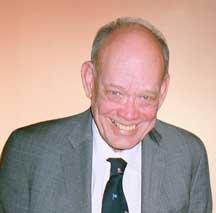
FGF OP-ED
The Confederate Lawyer
July 30, 2015

Mountains and Altars
by Charles G. Mills
fitzgerald griffin foundation
GLEN COVE, NY — God spoke to Noah, Abraham, and Moses on the tops of mountains. Jesus was transfigured and started his ascent into heaven on the top of mountains. Mountain tops can have a sacred nature. Things we value are called “elevated” or “exalted,” and this exaltation is reflected in many aspects of daily life, including good church architecture and liturgy.
The idea of a holy mountain can be reflected in the architecture of churches.
The thrones of kings and bishops are typically situated on raised platforms, as are the podia of presiding officers and the benches of judges. No one would suggest putting a presiding officer in a pit, like an opera orchestra; nor would they put the orchestra in its pit at a concert at which the orchestra is the star. We instinctively understand that high is more important than low.
Perhaps the greatest accomplishment of a Boy Scout is to climb more than 10,000 feet to the top of one of the Sangre de Cristo (Blood of Christ) mountains in New Mexico. Scouts making this climb pray together frequently as they ascend. Mountain tops afford us great vistas of the things of this world; the experience should also inspire thoughts of our Father in the heaven above us.
The idea of a holy mountain can be reflected in the architecture of churches. Well-designed churches have a clear separation between the nave and the sanctuary (or holy space), either via an altar rail or an iconostasis. For many centuries, Western churches had a platform raised by three or more steps, with the high altar on the top, prominently centered in the sanctuary. The followers of John Calvin never followed this pattern; instead, they debased the table they substituted for an altar by putting it at floor level.
“I will go in to the altar of God.”
The ancient liturgy of Rome, many of the medieval liturgies, and the Mass of Saint Pius V (now the Extraordinary Form) began with the celebrant standing at floor level and looking up toward the altar and saying, “I will go in to the altar of God.”
After a response, he would begin Psalm 42, which includes, “Send forth thy light and thy truth; they have led me and brought me unto thy holy mountain and thy tabernacles.”
The altar boy, or other ministers, or the people would then continue the psalm, “And I will go in to the altar of God....” After finishing the preparatory prayers and immediately before the priest prayed the Introit or entrance hymn, he would climb the three or more steps up to the altar of God.
“Send forth thy light and thy truth; they have led me and brought me unto thy holy mountain and thy tabernacles.”
—Psalm 42If we consider the climb up the steps to the altar of God as representing the climbing of God’s holy mountain, we fully appreciate the wisdom of placing this psalm at the start of the Mass and situating the high altar at least three steps above the floor. Later in the Mass, before the Eucharistic Prayer or Canon — which is the whole purpose of the Mass — the priest would invite the people to lift up their hearts (“Sursum corda”) because the ascent to the altar is not only physical.
Prophets and apostles climbed real mountains. Our priests and deacons can symbolically join them if we build our churches to better reflect our heritage of many thousands of years since Noah, Abraham, and Moses, and the promises made to them on mountains now being fulfilled in our presence in our churches.
The Confederate Lawyer archives
The Confederate Lawyer column is copyright © 2015 by Charles G. Mills and the Fitzgerald Griffin Foundation, www.fgfBooks.com. All rights reserved.
This column may be forwarded, posted, or published if credit is given to Charles Mills and fgfBooks.com.
Charles G. Mills is the Judge Advocate or general counsel for the New York State American Legion. He has forty years of experience in many trial and appellate courts and has published several articles about the law.
See his biographical sketch and additional columns here.
To sponsor the FGF E-Package, please send a tax-deductible donation to the:
Fitzgerald Griffin Foundation
344 Maple Avenue West, #281
Vienna, VA 22180
1-877-726-0058
publishing@fgfbooks.com
or donate online.
@ 2025 Fitzgerald Griffin Foundation